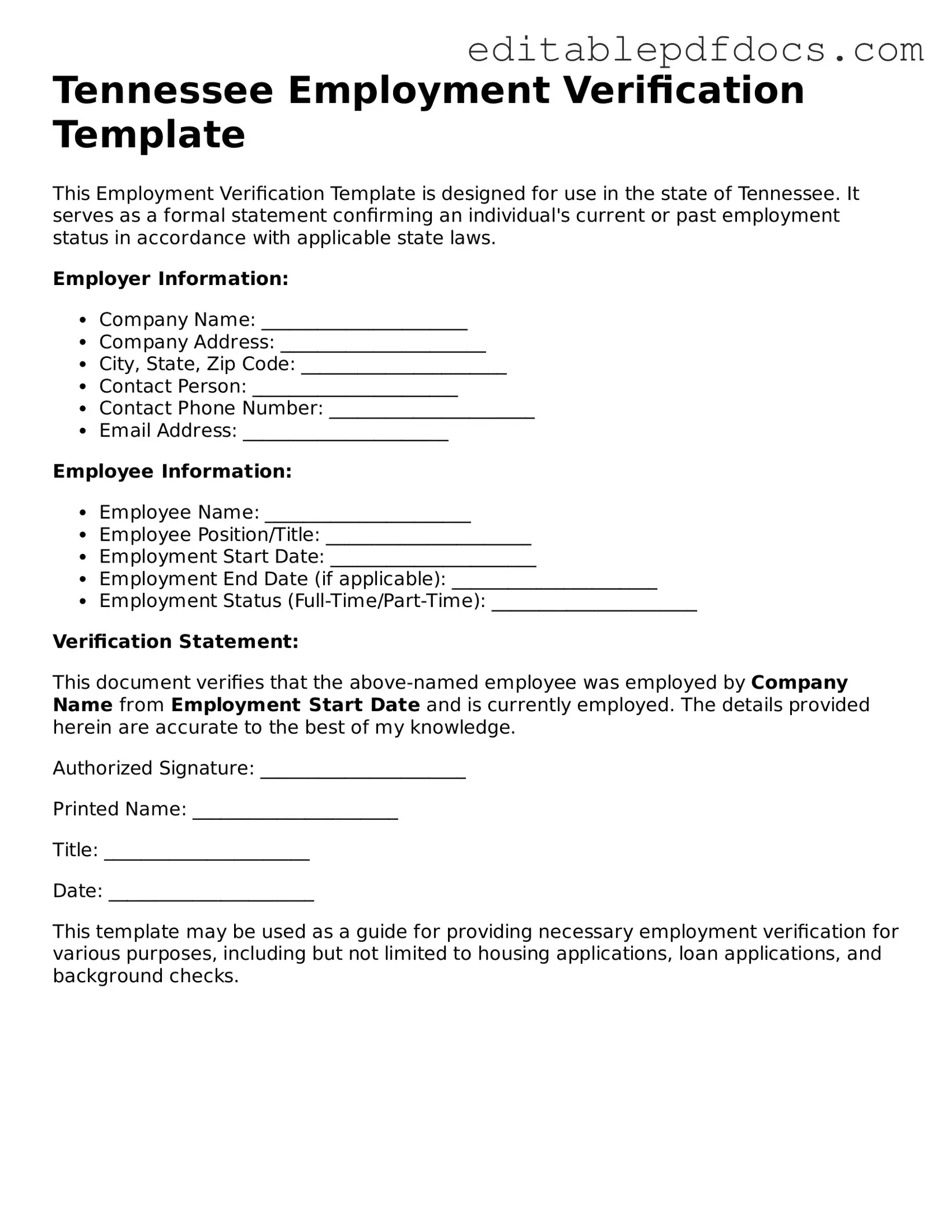Employment Verification Document for Tennessee
The Tennessee Employment Verification form is a document used to confirm an individual's employment status and details with a specific employer. This form is often required for various purposes, such as loan applications, background checks, or rental agreements. Understanding how to complete and submit this form accurately is essential for ensuring a smooth verification process.
To get started, fill out the form by clicking the button below.
Open Editor Now
